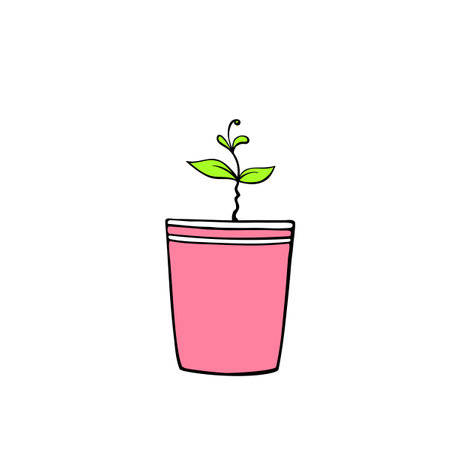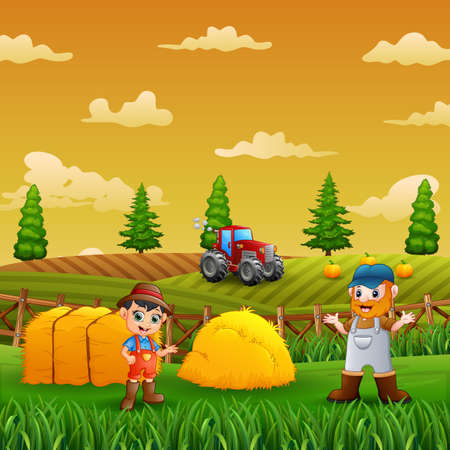Introduction to Sustainable Gardening
As more Americans embrace eco-conscious lifestyles, sustainable gardening has taken center stage in backyards and community plots across the country. The concept of sustainability goes beyond just growing your own food—it’s about making choices that protect our environment for future generations. One practical way gardeners can make a positive impact is by using recycled and eco-friendly materials when building raised beds. By opting for repurposed wood, reclaimed bricks, or biodegradable composites, you not only reduce waste but also minimize the carbon footprint associated with new products. Sustainable gardening practices like these contribute to healthier soil, cleaner air, and a stronger connection to nature. Choosing recycled and eco-friendly materials for DIY raised beds doesn’t just benefit your garden; it supports a broader movement toward responsible stewardship of our planet right here in America.
Choosing the Right Eco-Friendly Materials
When it comes to building a DIY raised bed that is both sustainable and environmentally friendly, choosing the right materials is key. In the United States, there’s a wide variety of recycled and eco-friendly options available for gardeners who want to reduce their environmental footprint while still creating attractive and durable raised beds. Knowing what’s available and how to choose the best material for your needs can make all the difference in your gardening project.
Common Eco-Friendly Materials for Raised Beds
| Material | Source | Benefits | Considerations |
|---|---|---|---|
| Reclaimed Wood | Old barns, pallets, shipping crates | Natural look, biodegradable, keeps wood out of landfills | Check for chemicals or treatments; avoid pressure-treated wood before 2003 due to harmful chemicals |
| Composite Lumber | Recycled plastics mixed with wood fibers (available at major hardware stores) | Resistant to rot and insects, long-lasting, low maintenance | May have higher upfront cost; not biodegradable but uses recycled content |
| Repurposed Brick or Stone | Demolition sites, salvage yards, leftover construction materials | Durable, classic appearance, excellent drainage | Heavy to move; may require more effort to install securely |
| Corrugated Metal Panels | Sourced from old sheds, roofs, or purchased new with recycled content options | Sleek modern look, weather-resistant, easy to assemble with wood frames | Can get hot in full sun; edges may need protection for safety |
| Bamboo | Bought locally or repurposed from garden projects | Rapidly renewable resource, lightweight, unique aesthetic | Less durable in cold/wet climates; may need regular maintenance or replacement over time |
Selecting the Best Material for Your Needs
The right material for your raised bed depends on several factors: your budget, local climate, intended crop type, and personal style preferences. For example, if you’re aiming for a rustic garden look and want to keep costs low, reclaimed wood might be your best bet—just make sure its untreated and free from harmful chemicals. If durability and minimal upkeep are priorities, composite lumber or stone could be ideal choices. Urban gardeners often find repurposed bricks or corrugated metal panels perfect for smaller spaces where longevity and compact design matter.
Tips for Sourcing Materials Locally
- Check community boards like Craigslist or Facebook Marketplace for free or inexpensive reclaimed materials.
- Visit local salvage yards or Habitat for Humanity ReStores to find bricks, stone, or gently used lumber.
- Ask neighbors or local businesses about leftover construction materials they’re willing to give away or sell cheaply.
- If using pallets, look for those stamped “HT” (heat-treated) rather than “MB” (methyl bromide), which can be toxic.
Sustainability Beyond Materials: Think Lifecycle Impact
Remember that sustainability isn’t just about where your materials come from—it’s also about how long they last and what happens at the end of their life cycle. Opting for sturdy reclaimed wood or recycled composites means fewer replacements over time. By choosing wisely now and sourcing locally whenever possible, you’ll build a raised bed that’s truly eco-friendly from start to finish.

3. Sourcing Materials Locally
When it comes to building eco-friendly raised beds, sourcing materials locally is both a sustainable and budget-friendly strategy. Not only does this reduce the environmental impact from transportation, but it also gives you access to unique, recycled building materials that might not be available at big box stores. One of the best places to start your search is your local Habitat for Humanity ReStore. These nonprofit home improvement stores sell donated building supplies, fixtures, and tools at discounted prices, with proceeds supporting community housing projects. You can often find reclaimed wood, bricks, and even unused lumber perfect for your garden project.
Crowdsourced platforms like Craigslist and Facebook Marketplace are also gold mines for DIY gardeners. Many people list leftover construction materials or dismantled furniture for free or cheap—sometimes you just need to pick them up. Look for listings under “free stuff,” “building materials,” or check neighborhood-specific groups where residents share or swap items they no longer need. Don’t hesitate to post a request for specific materials; you’d be surprised how many folks have spare fence boards or old pallets lying around.
Neighborhood swap groups, Buy Nothing Project communities, and local gardening clubs can also connect you with people eager to give away usable resources. These hyper-local networks are all about reusing items within the community instead of sending them to the landfill. By tapping into these resources, not only do you save money and reduce waste, but you also foster connections with neighbors who may share advice or even lend a hand with your raised bed project. Sourcing locally is more than just practical—it’s a way to build a greener, more connected community one raised bed at a time.
4. Step-by-Step Guide to Building Your Raised Bed
Building a raised bed from recycled or eco-friendly materials is an approachable and rewarding DIY project. Below, you’ll find a detailed walk-through that covers everything from initial planning to final assembly, ensuring your new garden bed is both functional and sustainable.
Step 1: Planning Your Raised Bed
Before gathering materials, decide on the size and location of your raised bed. Typical heights range from 12 to 24 inches, with widths up to 4 feet for easy access from all sides. Make sure the chosen spot gets at least 6-8 hours of sunlight daily.
Recommended Sizes for Raised Beds
| Length (ft) | Width (ft) | Height (inches) | Best For |
|---|---|---|---|
| 4 | 4 | 12-18 | General vegetable gardening |
| 6 | 3 | 18-24 | Taller crops or root veggies |
| 8 | 2 | 12-18 | Narrow spaces, herbs, flowers |
Step 2: Gathering Materials and Tools
Select durable recycled or eco-friendly materials such as reclaimed wood (untreated pallets, old fencing), composite lumber made from recycled plastics, or even upcycled bricks. You’ll also need basic tools: a saw, drill, screws/nails, measuring tape, square, and safety gear.
Step 3: Preparing the Site
Clear the area of grass and debris. Level the ground as much as possible—this helps prevent uneven settling later on. Lay down cardboard or several layers of newspaper as a natural weed barrier.
Step 4: Constructing the Frame
- Measure & Cut: Measure out your boards or other materials according to your planned dimensions. Cut them to size.
- Assemble Corners: Align the corners at right angles and secure them using screws or nails. Reinforce with corner brackets if available.
- Add Extra Support: If your bed is longer than 6 feet, install a cross-support in the middle to keep the sides from bowing out under soil weight.
Eco-Friendly Fastener Options:
| Material Type | Description/Use Case |
|---|---|
| Galvanized Screws/Nails | Rust-resistant; ideal for outdoor use; recyclable metal. |
| Bamboo Pegs/Dowels | Sustainable; best for smaller beds or where aesthetics matter. |
| Salvaged Metal Brackets | Add strength at corners; reuse old hardware where possible. |
Step 5: Filling and Planting
Add a mix of compost, topsoil, and organic amendments into your finished frame. Avoid using soil from potentially contaminated sites. Once filled, water thoroughly before planting seeds or seedlings.
This step-by-step approach ensures your raised bed project remains environmentally responsible while meeting your gardening needs—so you can enjoy fresh produce and flowers with peace of mind!
5. Benefits and Considerations of Using Recycled Materials
Choosing recycled or repurposed materials for your DIY raised beds is not just a smart move for the environment—it also brings unique character to your garden. Let’s break down the advantages, potential challenges, and safety tips you should know when working with reclaimed resources.
Advantages of Going Green with Raised Beds
Environmental Impact: By reusing materials like old pallets, bricks, or reclaimed lumber, you’re keeping usable items out of landfills and reducing demand for new resources. This sustainable approach is a direct way to lower your carbon footprint in everyday gardening.
Budget-Friendly: Many recycled materials can be sourced for free or at a low cost from local hardware stores, construction sites, or neighborhood groups. Saving money on materials means more room in the budget for quality soil and seeds.
Unique Aesthetic: Repurposed wood, vintage metal, or even old concrete blocks can create a truly one-of-a-kind look. Your garden will stand out with its blend of rustic charm and eco-conscious design.
Potential Challenges to Consider
Material Condition: Not all reclaimed materials are suitable for garden use. Some may be weathered, warped, or infested with pests. Always inspect materials carefully before building.
Chemical Safety: Be cautious with treated woods (like old railroad ties or certain pallets), painted surfaces, or plastics that might leach chemicals into your soil. Look up the origins of your materials when possible, and avoid anything that could compromise the safety of your plants—or your family’s health.
Safety Tips for Working with Reclaimed Supplies
- Clean Thoroughly: Wash all reclaimed items to remove dirt, residues, or any potentially harmful substances.
- Smooth Rough Edges: Sand down splinters and sharp edges to prevent injuries while gardening.
- Use Non-Toxic Sealants: If sealing wood, choose products labeled as food-safe and non-toxic.
A Final Word
Tapping into recycled and eco-friendly materials is both rewarding and practical for DIY raised bed projects. By weighing the pros and cons—and taking a few simple precautions—you’ll create a sustainable space that’s safe, stylish, and rooted in American ingenuity.
6. Caring for and Maintaining Your Eco-Friendly Raised Bed
Once you’ve built your raised bed using recycled and eco-friendly materials, keeping it in top shape is key to making your hard work last. Because these materials are often more sensitive to weather and wear than traditional lumber, a little extra care goes a long way. Regular maintenance not only extends the life of your DIY project but also helps reduce waste by minimizing repairs and replacements.
Protecting Your Materials from the Elements
If you used reclaimed wood, pallets, or other repurposed items, consider treating them with a non-toxic sealant or natural oil like linseed oil to shield against moisture and pests. For beds made from recycled plastic or composite boards, rinse off dirt and debris periodically—these materials usually stand up well to rain, but keeping them clean prevents mold buildup.
Managing Soil Moisture and Drainage
Proper drainage is essential for both plant health and material longevity. Check that water isn’t pooling around the base of your bed after heavy rain. If you notice soggy spots, add more drainage holes or adjust the soil mix with sand or perlite. For urban gardeners using metal containers or old barrels, monitor for rust and repaint with food-safe rust-resistant paint as needed.
Routine Inspections and Quick Fixes
Set aside time each season to inspect your raised bed. Look for signs of rot on wooden components, cracks in recycled plastic panels, or loose fasteners. Tighten screws, replace damaged planks, and patch up small holes promptly to avoid larger repairs later on.
Sustainable Upkeep Practices
Stick with eco-friendly maintenance routines: use biodegradable cleaners, choose natural pest deterrents like neem oil instead of harsh chemicals, and add mulch made from yard waste to conserve moisture. This keeps your garden healthy while staying true to your sustainability goals.
Making Repairs the Green Way
If any part of your raised bed needs replacing, try to source additional recycled or salvaged materials rather than buying new ones. Reach out to local community groups or browse online marketplaces for free or low-cost supplies—it’s a great way to keep things green and budget-friendly.
With a little attention and some sustainable TLC, your eco-friendly raised bed can thrive season after season—proving that gardening with recycled materials isn’t just good for the planet; it’s practical for you too.
7. Inspiring Real-Life American DIY Projects
Across the United States, gardeners are getting creative with recycled and eco-friendly materials to build unique and sustainable raised beds. Their innovative projects not only help reduce waste but also inspire communities to consider greener alternatives for their gardens.
The Pallet Garden in Portland, Oregon
In Portland, a group of neighbors transformed discarded shipping pallets into a series of stylish raised beds for a community vegetable garden. By carefully removing nails and sanding down the wood, they ensured the safety and durability of their beds. This collaborative project diverted dozens of pallets from landfills, created a vibrant green space, and fostered a sense of neighborhood pride.
Upcycled Bathtubs in Austin, Texas
One resourceful gardener in Austin repurposed old cast-iron bathtubs salvaged from renovation sites as quirky raised beds. These tubs were filled with organic soil and planted with native herbs and vegetables. Not only did this approach keep bulky items out of local dumps, but the gardener also found that the tubs’ enamel coating helped regulate soil temperature—resulting in healthier plants throughout the Texas heat.
Reclaimed Brick Beds in Philadelphia
A Philadelphia homeowner used bricks left over from a demolished building to construct sturdy, attractive raised beds along her urban driveway. The bricks were arranged in creative patterns, turning the garden into a work of art while highlighting the beauty and versatility of reclaimed materials. This project demonstrated how even small urban spaces can benefit from sustainable gardening solutions.
Environmental Impact and Community Inspiration
These real-life examples showcase how American gardeners are embracing recycled and eco-friendly materials for DIY raised beds. Their efforts not only reduce landfill waste but also spark new ideas for others looking to make their gardens more sustainable. By sharing their stories, these gardeners inspire communities across the nation to rethink what’s possible—and to see discarded materials as valuable resources for growing food and greening our neighborhoods.


